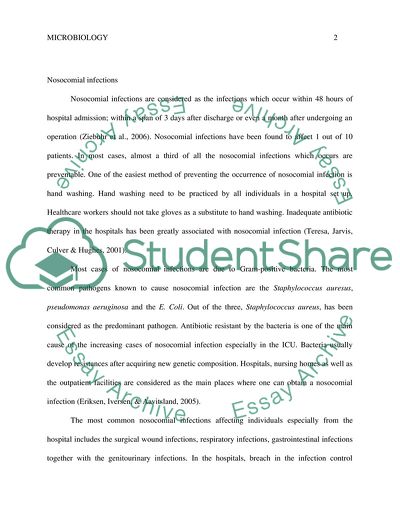Micro paper Research Example | Topics and Well Written Essays - 500 words. https://studentshare.org/medical-science/1871134-nosocomial-infections
Micro Paper Research Example | Topics and Well Written Essays - 500 Words. https://studentshare.org/medical-science/1871134-nosocomial-infections.


